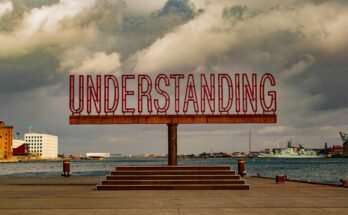New York homeowners face unique insurance challenges in our ever-changing world. As climate events grow more extreme and construction costs rise, finding comprehensive yet affordable coverage is more important than ever.
We’ll cover policy types, required coverage amounts, discounts and surcharges, filing claims, and more. By the end, you’ll be well-equipped to understand your options, compare rates from multiple insurers, and choose a plan tailored to your needs. Let’s get started!
Understanding Home Insurance Policies in New York
New York law requires all homeowners to carry property insurance to protect their most valuable asset – their home. The two main types of policies available are:
Standard Homeowners Insurance
A standard homeowners policy provides coverage for both your home’s structure and belongings. It insures the costs to repair or rebuild your home if damaged by events like fires, storms or falling trees. It also covers your possessions if they’re stolen or destroyed.
Look for policies that meet the state’s minimum liability coverage of $100,000. Also ask about optional riders like earthquake, flood or identity theft protection which may be worth adding in certain areas.
Condominium Insurance
Condo owners have similar risks to those with standalone homes. However, a condo policy only covers the interior of your unit – from the walls in. It does not insure the building’s overall structure or common areas.
You’ll still want liability coverage in case you’re held responsible for accidents or injuries occurring within your unit. Ensure your policy protects personal belongings too against water leaks, fires, and other covered perils.
Understanding Home Insurance Deductibles in New York
Your deductible is the amount you’re responsible for paying out-of-pocket on any covered claim before the insurer begins reimbursing costs. Generally, the higher your deductible, the lower your premiums will be each year.
Some common deductible options for home insurance policies in New York include:
- $250-$500: Lower deductibles mean higher monthly costs, but you pay less if filing a claim.
- $1,000: Considered a “middle” deductible that balances reasonable premiums with manageable claim responsibilities.
- $2,500 or higher: Great for reducing premiums, but only worth it if you rarely file claims and can afford larger repair bills yourself.
Be sure any deductible you choose won’t put too much strain on your finances in the event of real losses. Build an emergency fund if possible to cover the amount before assistance kicks in.
Required Coverage Amounts for New York Home Insurance
State law also mandates minimum coverage limits your property insurance policy must maintain. These guarantee a baseline protection level in major loss scenarios. Here are New York’s key coverage rules:
Dwelling Coverage: At least 80% of your home’s rebuilding cost as determined by the insurer.
Personal Property Coverage: 50-70% of your home’s insured value is typical, depending on belongings value.
Liability Coverage: As mentioned, a minimum of $100,000 is required for risks like slips/falls on your property.
Additional Living Expenses: Requirements vary, but aim for at least 12-18 months of housing costs if displaced.
Be sure to update coverage amounts annually as home values and rebuilding costs increase over time. Keep meticulous home inventories and records too in case full claims documentation is ever needed.
Getting Accurate New York Home Insurance Quotes
Once you understand policy types and coverage requirements, the next step is shopping for quotes from top insurers. Here are some best practices when requesting estimates:
Get Quotes from Multiple Companies: Rates can vary widely, so always compare 3-5 quotes minimum.
Be Honest About Risks: Omitting information that affects risk (e.g. home age, maintenance issues) could void any policy later on.
Highlight Discounts: Maintain no claims history, complete safety upgrades, or have an active alarm system all help lower premiums.
Use a Licensed Agent: They represent many companies at once and help vet that quotes account for your full profile and needs.
Ask About Bundled Discounts: Some insurers reward customers who hold both home and auto policies with them.
Check that All Required Coverage Types/Limits are Included Avoid any gaps that could leave you underprotected in the future.
Armed with the right information, you can truly “shop” insurers against each other for the best possible rates tailored to your situation.
Understanding Home Insurance Discounts and Surcharges
As a New York homeowner, you have some power to lower your premium costs through safer practices or upgrades qualifying for discounts. However, certain risks may also result in surcharges being applied. Here are some common examples:
Top Discounts:
- Alarm System (burglar, fire)
- New Roof/Updates
- Claims-Free History
- Credit Score
- Home Security Memberships
- Education/Occupation
Potential Surcharges:
- Prior Claims
- Older Home Age
- Substandard Construction
- Coastal/Flood Zone Location
- Incomplete Maintenance
- Inadequate Security
- Building Code Violations
Maintenance like yearly roof checks, smoke detector batteries, and quick fixes go a long way to remaining discounts-eligible each year. Also, let insurers know about any home hardening efforts that reduce risks over time.
Filing a Home Insurance Claim in New York
Unfortunately, losses and damage are inevitable facts of homeownership. Knowing your rights and responsibilities in the claims process helps things go smoothly when you need funds for covered repairs. Here are key steps:
Contact Your Insurer Immediately: Check your policy for timelines on reporting incidents. Speed is important to triggering investigations and payments.
Secure Your Property: If flooding, fire, etc, had the potential to spread, take photos of secured areas prior to repair efforts starting for verification.
Document Everything: Save receipts, and records of damaged assets – even content inventories on file. Taking photos is also convincing documentation.
Expect an Adjustor Visit: They will inspect damages first-hand to verify covered reasons and write damage estimates for work needed.
Follow Claim Procedures: Read policy clauses on preferred/approved repair vendor selection, payment disbursement methods, and how long repairs have to be completed.
Questions/Concerns? Escalate: Work with adjustors professionally but insist on fair treatment. Compliant procedures exist if issues persist and deadlines advance.
Keeping meticulous records and communications with your insurer leads to seamless claims resolutions. Fighting fraud also keeps rates lower for all customers long-term.
Preparing Your Home for Major Weather Risks
Parts of New York are prone to hurricanes, floods, earthquakes, snow emergencies, and more. Protecting your property has never been so important with climate patterns changing. Investigate the following preparation strategies:
Strengthen Roof and building Structures: Add reinforcement brackets, new roofing material, storm shutters, and hurricane clips in beams where needed.
Relocate Utilities: Move electrical boxes and HVAC systems to higher floors or outdoor flood or wind hazard zones if possible.
Back-Up Critical Documents: Financials, photos of property/contents – keep digital copies stored off-site, like in the cloud, in case disaster strikes.
Brush Up Emergency Plans: Store emergency supplies, review evacuation routes, and practice family communication methods when times are stressful.
Consider Flood Insurance: It’s typically cheaper to insure flooding risk before a major incident than try to get retroactive coverage after damage occurs.
Small efforts go a long way to hardening your property against natural threats. Grants may even help offset costs – check with your county. An ounce of preparation is worth far more than a last-minute pound of unplanned repairs.
Getting the Best Rates and Coverage in 2024
We’ve covered a lot of ground, but here are some final pointers to getting the most comprehensive coverage at optimized rates for the new year 2024:
- Carefully review policy quotes line-by-line to catch anomalies or coverage gaps requiring adjustment before committing.
- Make certain any construction upgrades or home investments completed recently are accounted for through updated dwelling coverage amounts.
- Update insurer representatives if major policy changes occurred at renewal, such as higher liabilities from an in-home business launch.
- Check that state-required coverage amounts for things like liability and additional living expenses are appropriately set.
- Ask about new product offerings or multi-policy bundled rate programs that just launched, which may offer new savings for your profile.
- Consider enhancing an existing policy with useful optional protection like identity theft coverage if applicable in your area.
Armed with a full understanding of homeowners insurance essentials, you’re now ready to negotiate for the most comprehensive terms tailored precisely to your needs, priorities, and budget heading into the new year.
FAQs About Home Insurance in New York
1. What natural disasters are the most common risks in New York?
As mentioned above, the most prevalent natural disasters facing New York homeowners include hurricanes, flooding, severe winter weather, and seasonal storms. Proper insurance coverage and home hardening techniques can help mitigate these climate risks.
2. How often should I review my home insurance needs and policy coverage?
It’s recommended to review your home insurance needs and policy details at least once per year, but after any major life events, including home renovations, marriages, births, or property value changes. Ensuring your coverage amounts and liability limits stay up to date is important.
3. What is the claims process for filing a home insurance claim in New York?
The claims process typically involves promptly notifying your insurer, securing your property, documenting damages, having an adjuster assess repairs, and following your policy’s procedures for contractor selection and payment disbursal. Keeping thorough records and communicating with your insurer helps ensure a smooth process.
4. How can I help lower my home insurance premiums?
Some ways to potentially lower premium costs include maintaining a clean claims history, completing home safety upgrades, choosing a higher deductible, bundling with auto policies, taking advantage of discounts for security systems, and making sure your credit score is in good standing if insurers use it to rate risks.
5. What is the minimum amount of liability coverage required in New York?
By state law, the minimum required amount of liability coverage for home insurance policies in New York is $100,000. This protects you in the event of accidents, injuries, or other claims made against you by others occurring on your property.



